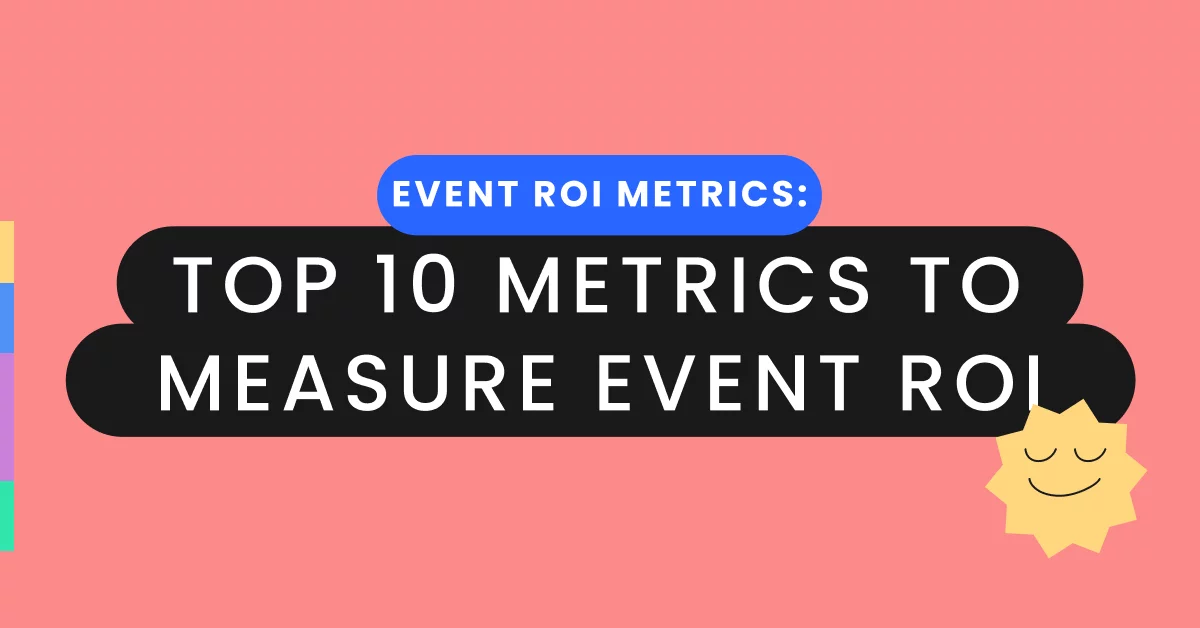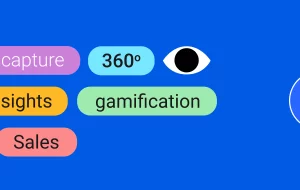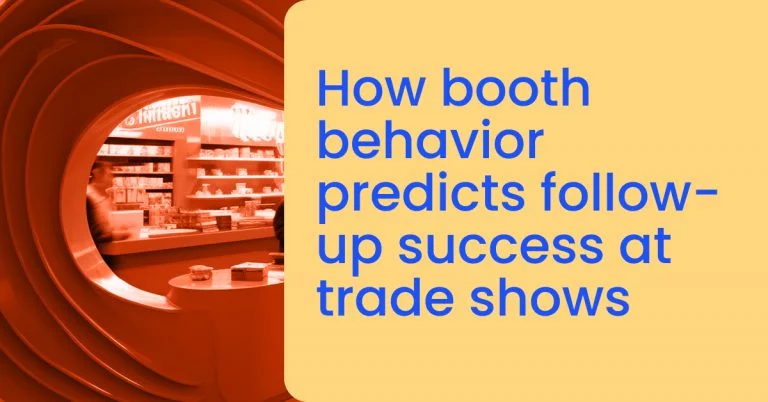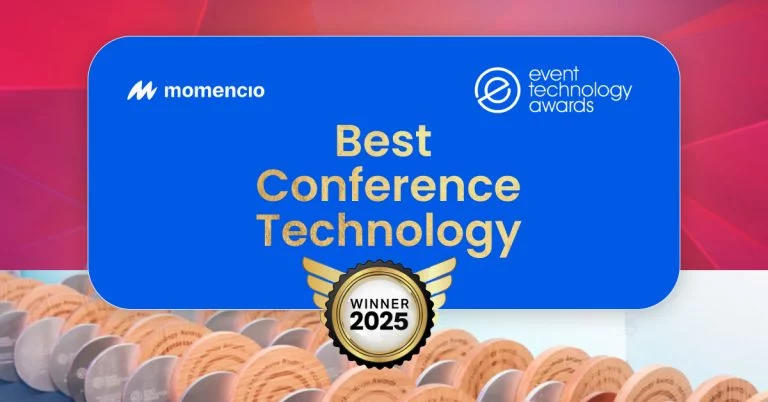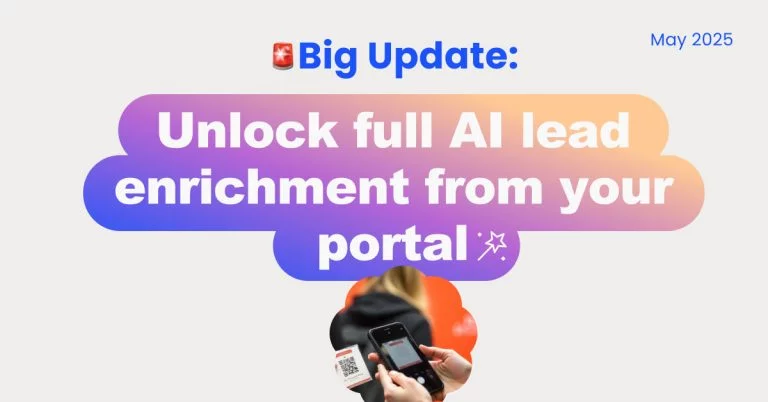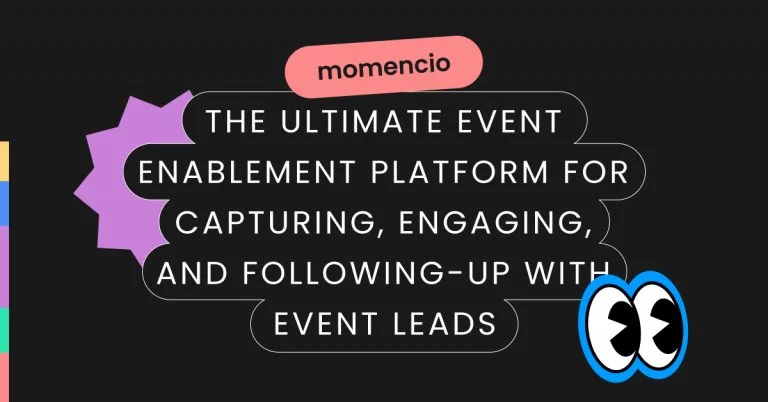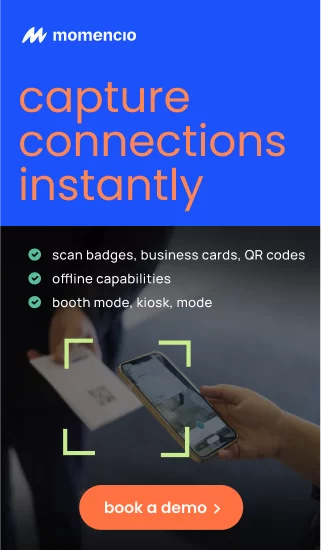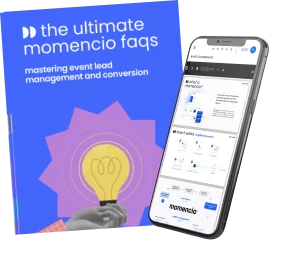Event ROI Metrics
Measuring the return on investment (ROI) of events is critical for event planners and marketers. It not only helps justify the expenses but also provides insights into the success and impact of the event. According to a study by Eventbrite, 79% of event organizers measure event success by attendance, but fewer than 30% measure financial ROI. This highlights a gap in understanding the actual value of events.
To bridge this gap, event professionals need to focus on a variety of metrics that paint a complete picture of an event’s performance. From attendee engagement to revenue generation, each metric provides a unique perspective on how well an event has met its objectives. This article will explore the top 10 metrics that are essential for measuring event ROI, offering detailed insights into how to track and analyze these metrics effectively.
By understanding and utilizing these metrics, event planners can not only demonstrate the success of their events but also make data-driven decisions to improve future events. The metrics covered will help in identifying strengths and areas for improvement, ultimately leading to more successful and impactful events.
Now, let’s delve into the essential metrics for measuring event ROI, how to track and analyze them, and their significance in showcasing event success.
Event Registration and Attendance
Event registration and attendance are foundational metrics for evaluating the success of any event. These metrics not only provide insights into the event’s reach but also help understand the audience composition and engagement levels. Here’s a detailed look at how to measure pre-event registration, analyze attendee demographics, and track on-site attendance effectively.
Measuring Pre-Event Registration
Pre-event registration is a critical indicator of an event’s potential success. High registration numbers can reflect effective marketing and interest in the event. Here are steps to measure and analyze pre-event registration:
- Registration Platforms: Utilize online registration platforms that offer detailed analytics. These platforms can provide real-time data on the number of registrations, source of registrations (e.g., email campaigns, social media, referrals), and registration trends over time.
- Registration Trends: Track the registration trends to understand peak registration periods. This data can help optimize marketing efforts by identifying the best times to promote the event.
- Conversion Rates: Calculate the conversion rate by comparing the number of registrations to the number of invites sent out. This metric helps you understand the effectiveness of your invitation process.
- Early Bird vs. Last-Minute Registrations: Analyze the proportion of early bird registrations versus last-minute sign-ups. This can provide insights into attendee behavior and help in planning future promotions and discounts.
Analyzing Attendee Demographics
Understanding the demographics of your attendees is crucial for tailoring event content and engagement strategies. Here are ways to analyze attendee demographics:
- Demographic Data Collection: Collect demographic information during the registration process, such as age, gender, location, industry, job title, and company size. Ensure that the registration form is user-friendly to encourage completion.
- Segmentation: Segment attendees based on the collected demographic data. This segmentation can help in creating personalized experiences and targeted communications for different attendee groups.
- Insights from Demographics: Use demographic insights to tailor event content and activities. For example, if a significant portion of your audience is from a specific industry, ensure that your event content includes topics and sessions relevant to that industry.
- Comparative Analysis: Compare demographic data across different events to identify trends and changes in your audience composition. This can help in refining your marketing strategies and event offerings over time.
Tracking On-Site Attendance
Tracking on-site attendance is essential to understand actual participation and engagement during the event. Here are methods to effectively track and analyze on-site attendance:
- Check-In Systems: Implement efficient check-in systems, such as QR codes, RFID badges, or mobile apps, to streamline the process and reduce wait times. These systems can provide real-time attendance data.
- Session Attendance: Track attendance at individual sessions to determine which topics and speakers attracted the most interest. This data can help in planning future event agendas.
- Engagement During the Event: Monitor attendee movement and engagement using technologies like heat maps, which show how attendees interact with different event areas. This can provide insights into popular booths, sessions, and networking spots.
- Attendance vs. Registration: Calculate the attendance rate by comparing the number of check-ins to the total registrations. A high no-show rate might indicate issues with event timing, location, or perceived value.
- Post-Event Surveys: Conduct post-event surveys to gather feedback on attendance experience. Questions about ease of check-in, session engagement, and overall satisfaction can provide valuable insights for future improvements.
By effectively measuring pre-event registration, analyzing attendee demographics, and tracking on-site attendance, event planners can gain comprehensive insights into their event’s performance. These metrics not only help in understanding the reach and engagement of the event but also provide data-driven insights for planning future events. Utilizing advanced registration platforms, demographic analysis tools, and real-time attendance tracking technologies can significantly enhance the ability to demonstrate the success of an event and make informed decisions for continuous improvement.
Engagement Metrics
Engagement metrics are pivotal for assessing how actively participants are involved during an event. These metrics help determine the effectiveness of the event content, activities, and overall attendee experience. Here’s how to measure interaction levels, social media engagement, and session participation and feedback.
Interaction Levels During the Event
Interaction levels during an event provide insights into how engaged and interested attendees are in real time. High interaction levels typically indicate successful engagement strategies. Here’s how to measure and analyze interaction levels:
- Live Polls and Q&A Sessions: Utilize live polls and Q&A sessions to engage attendees actively. These tools allow participants to voice their opinions and ask questions, providing a clear indicator of engagement. Track the number of questions asked, poll responses, and the overall participation rate.
- Interactive Technologies: Implement interactive technologies such as augmented reality (AR) experiences, live demonstrations, and gamification—track participation in these activities to gauge engagement levels.
- Networking Activities: Measure participation in networking activities such as speed networking, matchmaking sessions, and informal meetups. High participation rates indicate strong interest in peer-to-peer interactions.
- Event App Engagement: Monitor the usage of the event app. Metrics like the number of logins, time spent on the app, and interactions with features such as event agendas, maps, and attendee messaging provide valuable insights into attendee engagement.
- Engagement Heat Maps: Use heat maps to visualize attendees’ movement and interaction at the event venue. This technology can show which areas attracted the most attention, helping you understand where engagement was highest.
Social Media Engagement
Social media engagement is a powerful metric for measuring the reach and impact of your event beyond the physical venue. It reflects how attendees and the broader audience interact with event-related content on social media platforms. Here’s how to measure and analyze social media engagement:
- Hashtag Tracking: Create a unique event hashtag and track its usage across social media platforms. Monitor the number of posts, shares, likes, and comments associated with the hashtag to measure engagement.
- Social Media Mentions: Track mentions of your event, speakers, sponsors, and related topics on social media. Use social listening tools to gather data on the volume and sentiment of these mentions.
- Engagement Rates: Calculate engagement rates by comparing the number of interactions (likes, shares, comments) to the total number of posts. Higher engagement rates indicate that the content resonates well with the audience.
- Influencer Activity: Monitor the activity of influencers who are promoting your event. Track their posts, the engagement they generate, and how their followers interact with the event-related content.
- Live Social Media Feeds: Implement live social media feeds at the event venue to display real-time posts and interactions. This encourages attendees to share their experiences and engage more actively on social media.
Session Participation and Feedback
Session participation and feedback are crucial for understanding which sessions were most engaging and valuable to attendees. Here’s how to measure and analyze these metrics:
- Attendance Tracking: Track the number of attendees at each session using check-in systems or event apps. Compare session attendance to overall event attendance to identify popular topics and speakers.
- Audience Participation: Measure audience participation through live polls, Q&A sessions, and interactive activities during each session. High participation rates indicate that the session content is engaging and relevant.
- Session Feedback Surveys: Conduct post-session surveys to gather feedback from attendees. Questions can cover the quality of the content, the effectiveness of the speaker, and the overall satisfaction with the session. Analyze this feedback to identify areas of improvement.
- Speaker Ratings: Collect ratings for each speaker or panel. This can help evaluate speaker performance and identify the most impactful speakers for future events.
- Content Engagement: Track how attendees interact with session-related content, such as downloading presentation materials, accessing session recordings, and sharing session highlights on social media.
Engagement metrics provide a comprehensive view of how attendees interact with various aspects of an event. By measuring interaction levels during the event, social media engagement, and session participation and feedback, event planners can gain valuable insights into the effectiveness of their engagement strategies. These metrics help in refining event content and activities to enhance the attendee experience and ensure the success of future events. Utilizing advanced engagement tracking tools and technologies can significantly improve the ability to measure and optimize engagement, leading to more impactful and memorable events.
Lead Generation and Quality
Lead generation and the quality of those leads are crucial metrics for assessing the impact of an event on business growth. Effective lead generation strategies not only attract a high volume of leads but also ensure that these leads have a high potential for conversion. Here’s how to measure the number of leads captured, analyze their quality, and track conversion rates from leads to customers.
Number of Leads Captured
Capturing a significant number of leads is a primary goal for many events. Here’s how to measure and analyze this metric:
- Lead Capture Tools: Use digital lead capture tools such as badge scanners, mobile apps, and registration platforms. These tools streamline the process of collecting contact information and other relevant data from attendees.
- Lead Capture Rates: Calculate the lead capture rate by dividing the number of leads captured by the total number of attendees. This metric helps us understand the efficiency of lead generation efforts.
- Lead Capture Points: Identify critical points during the event where leads are captured, such as at the registration desk, during sessions, at exhibitor booths, and through interactive activities. Analyzing these points can help in optimizing lead capture strategies.
- Engagement Activities: Measure participation in engagement activities designed to capture leads, such as contests, surveys, and networking sessions. High participation rates in these activities can indicate successful lead-capture tactics.
Quality and Follow-Up of Leads
While capturing a large number of leads is essential, ensuring the quality of these leads is crucial for achieving higher conversion rates. Here’s how to measure and analyze lead quality:
- Lead Scoring: Implement lead scoring systems to assess the quality of leads based on criteria such as job title, company size, industry, engagement level, and expressed interest. High scores indicate leads with a higher potential for conversion.
- Lead Qualification: Use qualification criteria to segment leads into categories such as Marketing Qualified Leads (MQLs) and Sales Qualified Leads (SQLs). This helps prioritize follow-up efforts on the most promising leads.
- Detailed Profiles: Create detailed profiles for each lead, capturing information such as interests, interactions, and engagement history. This information aids in personalizing follow-up communications.
- Follow-Up Effectiveness: Track the timeliness and effectiveness of follow-up actions. Measure response rates to follow-up emails, calls, and meetings. Prompt and personalized follow-up efforts typically yield better results.
Conversion Rates from Leads to Customers
Conversion rates are a direct indicator of the success of your lead generation efforts. Here’s how to measure and analyze this metric:
- Conversion Funnel Analysis: Analyze the conversion funnel from lead capture to customer acquisition. Track the number of leads at each stage of the funnel to identify drop-off points and areas for improvement.
- Conversion Rate Calculation: Calculate the conversion rate by dividing the number of leads that convert into customers by the total number of leads captured. This metric provides a clear picture of the effectiveness of your lead nurturing and sales processes.
- Time to Conversion: Measure the average time it takes for a lead to convert into a customer. Shorter conversion times can indicate effective lead nurturing and sales strategies.
- Revenue Contribution: Track the revenue generated from leads captured at the event. This helps you understand the financial impact of your lead generation efforts and justify the ROI of the event.
- Post-Event Sales: Monitor sales activities and closed deals attributed to leads captured during the event. This data provides a comprehensive view of the long-term impact of your event on business growth.
Effective lead generation and quality assessment are vital for demonstrating the business value of an event. By capturing a high volume of leads, ensuring their quality through lead scoring and qualification, and analyzing conversion rates, event planners can gain insights into the effectiveness of their lead generation strategies. These metrics help in optimizing future events to attract and convert high-quality leads, ultimately contributing to increased sales and business growth. Utilizing advanced lead capture tools, detailed profiling, and robust follow-up strategies can significantly enhance the success of lead generation efforts at events.
Revenue Metrics
Revenue metrics are essential for understanding the financial impact of an event. They help in measuring the direct and indirect contributions of an event to a company’s bottom line. Here’s how to calculate direct revenue from event activities, sponsorship and partnership revenues, and sales influenced by the event.
Direct Revenue from Event Activities
Direct revenue includes income generated from event registrations, ticket sales, on-site purchases, and other direct transactions. Here’s how to measure and analyze this metric:
- Ticket Sales: Track revenue from ticket sales by analyzing the number of tickets sold and the pricing tiers. Compare pre-event sales with on-site sales to understand purchasing behavior.
- On-Site Sales: Measure revenue generated from on-site sales, such as merchandise, food and beverage, and other products or services offered during the event. Use POS systems to track these transactions accurately.
- Workshops and Paid Sessions: If your event includes paid workshops or special sessions, track the revenue generated from these activities. Analyze attendance rates and participant feedback to gauge the value provided.
- Direct Purchases: Capture data on direct purchases made by attendees during the event. This can include items like books, digital products, or services offered by speakers or exhibitors.
- Post-Event Sales Offers: Track the revenue from special post-event sales offers or discounts provided to attendees. Analyze the uptake of these offers to measure their effectiveness.
Sponsorship and Partnership Revenues
Sponsorship and partnership revenues are significant contributors to an event’s overall income. Here’s how to measure and analyze these metrics:
- Sponsorship Packages: Track the revenue generated from different sponsorship packages. Analyze which packages are most popular and provide the highest ROI.
- Exhibitor Fees: Measure the income from exhibitor fees. Compare the number of exhibitors with the revenue generated to understand the average cost per exhibitor and the overall contribution to the event budget.
- Partnership Deals: Evaluate the financial impact of partnership deals, including revenue-sharing agreements, joint marketing initiatives, and other collaborative efforts. Track the income generated from these deals before, during, and after the event.
- In-Kind Contributions: Account for in-kind contributions from sponsors and partners, such as products, services, or promotional support. Estimate the monetary value of these contributions to get a comprehensive view of sponsorship value.
- Sponsorship ROI: Analyze the ROI for sponsors by evaluating the benefits they receive, such as brand visibility, lead generation, and engagement. Use surveys and feedback from sponsors to assess their satisfaction and likelihood of future participation.
Sales Influenced by the Event
Sales influenced by the event include both immediate and long-term sales resulting from leads generated during the event. Here’s how to measure and analyze this metric:
- Lead-to-Sale Conversion: Track the conversion of leads captured at the event into actual sales. CRM systems are used to follow the journey of each lead from initial capture to final sale.
- Sales Attribution: Attribute sales to the event by identifying deals that were initiated or accelerated due to interactions at the event. Analyze sales data to pinpoint which deals can be directly linked to event activities.
- Sales Pipeline Impact: Measure the impact of the event on the sales pipeline by tracking the progression of leads through different stages. Analyze how many leads moved to a higher stage in the pipeline as a result of the event.
- Customer Acquisition Cost (CAC): Calculate the CAC by dividing the total cost of the event by the number of new customers acquired. This metric helps in understanding the cost-effectiveness of the event in acquiring new customers.
- Revenue Growth: Measure the revenue growth attributed to the event by comparing sales data before and after the event. Identify trends and patterns that indicate a positive impact on revenue due to the event.
- Long-Term Sales Impact: Assess the long-term impact of the event on sales by tracking repeat purchases, customer retention rates, and the lifetime value (LTV) of customers acquired through the event.
Revenue metrics provide a clear picture of the financial success of an event. By measuring direct revenue from event activities, sponsorship and partnership revenues, and sales influenced by the event, event planners can demonstrate the tangible financial benefits of their efforts. These metrics help justify the investment in events and guide future strategies to maximize revenue generation. Utilizing advanced analytics and CRM systems can significantly enhance the ability to track and analyze revenue metrics, leading to more informed decision-making and more tremendous financial success for future events.
Cost Metrics
Cost metrics are vital for understanding the financial efficiency of an event. They help in analyzing the expenses involved, determining the costs involved, and determining the return on investment (ROI). Here’s how to measure total event cost analysis, cost per attendee, and ROI calculation.
Total Event Cost Analysis
Understanding the total cost of an event is crucial for budget planning and financial assessment. Here’s how to measure and analyze this metric:
- Fixed and Variable Costs: Identify and categorize all costs associated with the event into fixed and variable costs. Fixed costs include venue rental, speaker fees, and marketing expenses, while variable costs include catering, transportation, and printing.
- Detailed Expense Tracking: Maintain a detailed record of all expenses. Use accounting software to track every cost incurred, including pre-event, on-site, and post-event expenses. This ensures accurate cost analysis and budget management.
- Vendor and Supplier Costs: Track the costs associated with vendors and suppliers. Compare the prices of different vendors to ensure cost-effectiveness and negotiate better deals for future events.
- Labor Costs: Calculate the labor costs, including the salaries of event staff, contractors, and temporary workers. Consider both direct labor costs (staff working at the event) and indirect labor costs (planning and coordination).
- Technology and Equipment Costs: Include the costs of technology and equipment, such as audio-visual systems, event apps, registration platforms, and Wi-Fi services. Evaluate the efficiency and necessity of these expenses.
- Miscellaneous Costs: Account for any miscellaneous costs that may arise, such as insurance, licenses, permits, and unexpected expenses. These can often add up and impact the overall budget.
Cost per Attendee
Cost per attendee is a valuable metric for understanding the financial efficiency of an event. It helps in evaluating whether the event is cost-effective on a per-person basis. Here’s how to measure and analyze this metric:
- Total Cost Calculation: Sum up all the costs associated with the event to get the total event cost. This includes all fixed, variable, and miscellaneous expenses.
- Attendee Count: Determine the total number of attendees. Ensure accurate counting by using registration data and on-site attendance tracking systems.
- Cost per Attendee Formula: Calculate the cost per attendee by dividing the total event cost by the number of attendees. The formula is:
- Benchmarking: Compare the cost per attendee with industry benchmarks and past events to evaluate cost efficiency. Identify areas where costs can be optimized without compromising the quality of the event.
- Cost-Benefit Analysis: Perform a cost-benefit analysis by comparing the cost per attendee with the perceived value and satisfaction of the attendees. High costs per attendee may be justified if the event provides significant value.
Return on Investment (ROI) Calculation
ROI is a critical metric that measures the financial return generated from the event relative to its cost. Here’s how to measure and analyze ROI:
- Revenue Calculation: Calculate the total revenue generated from the event. This includes direct revenue (ticket sales, on-site sales) and indirect revenue (sponsorships, post-event sales influenced by the event).
- Total Cost Calculation: Determine the total event cost using the methods described above.
- ROI Formula: Calculate ROI using the formula:
This formula provides the ROI as a percentage, indicating the financial return relative to the investment made.
- Break-Even Analysis: Perform a break-even analysis to determine the minimum revenue required to cover the total event cost. This helps in setting realistic financial goals for future events.
- Comparative Analysis: Compare the ROI of the current event with past events and industry standards. This provides insights into financial performance and helps identify successful strategies and areas for improvement.
- ROI Drivers: Identify the key drivers of ROI, such as high-ticket sales, successful sponsorships, and effective lead generation. Focus on enhancing these drivers in future events to maximize ROI.
Cost metrics provide a comprehensive understanding of the financial efficiency and return on investment of an event. By analyzing total event cost, cost per attendee, and ROI, event planners can ensure effective budget management and demonstrate the financial success of their events. These metrics help in making informed decisions, optimizing costs, and maximizing revenue for future events. Utilizing detailed expense tracking, cost-benefit analysis, and ROI calculation tools can significantly enhance the ability to manage and evaluate the financial aspects of events.
Brand Awareness and Perception
Brand awareness and perception are critical for understanding the broader impact of an event on a company’s brand. These metrics help gauge how well the event succeeded in increasing brand visibility and shaping public perception. Here’s how to measure media mentions and PR coverage, brand sentiment analysis, and post-event surveys and feedback.
Media Mentions and PR Coverage
Media mentions, and PR coverage is essential indicators of the event’s reach and the level of interest it generated among the press and public. Here’s how to measure and analyze these metrics:
- Media Monitoring Tools: Utilize media monitoring tools to track mentions of your event in newspapers, magazines, online publications, blogs, and broadcast media. Tools like Meltwater, Cision, and Google Alerts can help aggregate and analyze this data.
- Volume of Mentions: Count the total number of media mentions before, during, and after the event. A high volume of mentions indicates strong media interest and successful PR efforts.
- Type of Coverage: Analyze the type of media coverage received, such as feature articles, news stories, interviews, and press releases. Assess the prominence of the coverage (e.g., front page, feature story) to gauge its impact.
- Reach and Impressions: Measure the reach and impressions of media coverage. Reach refers to the number of unique individuals who encountered the media mentions, while impressions indicate the total number of times the content was viewed.
- Key Messages: Ensure that key messages about your brand and event are consistently communicated in the media coverage. Analyze how well these messages are conveyed and whether they align with your brand’s objectives.
Brand Sentiment Analysis
Brand sentiment analysis helps in understanding the public’s perception of your brand as influenced by the event. Here’s how to measure and analyze this metric:
- Social Listening Tools: Use social listening tools like Brandwatch, Hootsuite, and Sprout Social to track mentions of your brand on social media platforms. These tools can analyze sentiment by evaluating the tone of the mentions (positive, negative, or neutral).
- Sentiment Score: Calculate the sentiment score by analyzing the proportion of positive, negative, and neutral mentions. A higher proportion of positive mentions indicates a favorable perception of your brand.
- Sentiment Over Time: Track sentiment over time to identify trends and changes in public perception. Analyze whether sentiment improved during and after the event compared to before the event.
- Qualitative Analysis: Conduct a qualitative analysis of social media comments, reviews, and feedback to gain deeper insights into why people feel a certain way about your brand. Identify recurring themes and concerns.
- Influencer Sentiment: Analyze the sentiment of mentions from key influencers and industry leaders. Positive mentions from influential figures can significantly enhance brand perception.
Post-Event Surveys and Feedback
Post-event surveys and feedback are direct methods for gathering insights from attendees about their experience and perception of your brand. Here’s how to measure and analyze these metrics:
- Survey Distribution: Distribute post-event surveys to all attendees using email, event apps, or survey platforms like SurveyMonkey or Typeform. Ensure high response rates by keeping surveys concise and incentivizing participation.
- Net Promoter Score (NPS): Measure NPS by asking attendees how likely they are to recommend your event to others on a scale of 0-10. Calculate the NPS by subtracting the percentage of detractors (scores 0-6) from the percentage of promoters (scores 9-10). A high NPS indicates intense attendee satisfaction and brand loyalty.
- Event Experience Ratings: Ask attendees to rate various aspects of the event, such as content quality, speaker performance, networking opportunities, and overall experience. Use a Likert scale (e.g., 1-5) for consistent measurement.
- Open-Ended Feedback: Include open-ended questions in surveys to capture detailed feedback. Ask attendees about their favorite and most minor favorite parts of the event, suggestions for improvement, and their overall impression of the brand.
- Feedback Analysis: Analyze survey responses to identify strengths and areas for improvement. Look for patterns in the feedback to understand common perceptions and experiences.
- Long-Term Follow-Up: Conduct follow-up surveys a few months after the event to assess the long-term impact on brand perception and attendee loyalty. This helps in understanding the lasting impressions left by the event.
Brand awareness and perception metrics provide valuable insights into the broader impact of an event on a company’s brand. By measuring media mentions and PR coverage, conducting brand sentiment analysis, and gathering post-event surveys and feedback, event planners can gauge the effectiveness of their branding efforts and make data-driven decisions for future events. These metrics help in understanding how well the event enhanced brand visibility, shaped public perception, and fostered long-term brand loyalty. Utilizing advanced media monitoring tools, social listening platforms, and comprehensive survey strategies can significantly improve the ability to measure and optimize brand awareness and perception metrics.
Content Effectiveness
Content effectiveness metrics are essential for evaluating how well the event content resonates with attendees and drives engagement. These metrics help in understanding the impact of presentations, workshops, and other content forms on attendee engagement and lead nurturing. Here’s how to measure engagement with event content, analyze downloads and shares of event materials, and assess the impact of content on lead nurturing.
Engagement with Event Content
Engagement with event content indicates how attendees interact with and respond to the information presented during the event. Here’s how to measure and analyze this metric:
- Session Attendance: Track attendance for each session, workshop, or presentation. Higher attendance rates indicate strong interest in the topic and speaker.
- Audience Participation: Measure the level of participation in interactive sessions, such as Q&A, polls, and discussions. High participation rates suggest that the content is engaging and relevant to the audience.
- Content Interaction: Use event apps or digital platforms to track interactions with content, such as viewing session materials, watching videos, or accessing presentations. Monitor metrics like time spent on content and the number of interactions.
- Real-Time Feedback: Collect real-time feedback from attendees during sessions using live polling tools and instant surveys. This immediate feedback helps gauge the effectiveness of the content and allows for on-the-spot adjustments if necessary.
- Social Media Engagement: Track mentions, shares, and comments related to event content on social media platforms. High levels of social media engagement indicate that the content resonated with attendees and sparked conversations.
Downloads and Shares of Event Materials
The number of downloads and shares of event materials provides insights into the value attendees place on the content supplied. Here’s how to measure and analyze this metric:
- Download Metrics: Track the number of times event materials, such as presentations, whitepapers, and eBooks, are downloaded. Use unique download links or trackable URLs to gather accurate data.
- Sharing Metrics: Monitor how often event materials are shared on social media, via email, or through other digital channels. High sharing rates indicate that attendees found the content valuable and worth sharing with their networks.
- Content Access: Measure how frequently attendees access on-demand content, such as session recordings and webinars. Track metrics like views, time spent watching, and repeat visits to gauge ongoing interest.
- Resource Center Traffic: Analyze traffic to the event’s online resource center or content library. Track page views, unique visitors, and time spent on these pages to understand how attendees are engaging with the available materials.
- Engagement with Follow-Up Content: Measure engagement with follow-up content sent after the event, such as recap emails, additional resources, or recorded sessions. High engagement with follow-up content suggests that attendees are continuing to find value in the event materials.
Impact of Content on Lead Nurturing
The effectiveness of event content in nurturing leads can significantly influence the overall success of an event. Here’s how to measure and analyze this metric:
- Lead Engagement Scores: Use lead scoring systems to assign engagement scores based on interactions with event content. High engagement scores indicate that the content is effectively nurturing leads.
- Content-Driven Conversions: Track conversions that result from interactions with event content. This includes actions like filling out forms, requesting demos, or making purchases after engaging with the content.
- Content Attribution: Attribute leads and conversions to specific pieces of content. Analyze which content types (e.g., webinars, case studies, presentations) are most effective in driving lead engagement and conversions.
- Email Engagement: Monitor engagement with content shared via email, such as click-through rates, open rates, and content downloads. High engagement rates indicate that the email content resonates with leads and nurtures them effectively.
- CRM Integration: Integrate content engagement data with your CRM system to track how interactions with event content influence the lead nurturing process. This integration provides a comprehensive view of lead behavior and content effectiveness.
- Feedback on Content: Gather input from leads about the event content through surveys and direct conversations. Understanding their perceptions and the value they derive from the content helps in refining future content strategies.
Content effectiveness metrics are crucial for evaluating how well event content engages attendees and supports lead nurturing efforts. By measuring engagement with event content, tracking downloads and shares of event materials, and analyzing the impact of content on lead nurturing, event planners can gain valuable insights into the effectiveness of their content strategies. These metrics help identify successful content, understand attendee preferences, and make data-driven decisions to enhance future events. Utilizing advanced tracking tools, lead scoring systems, and CRM integrations can significantly improve the ability to measure and optimize content effectiveness, leading to more impactful and successful events.
Read more about the role of technology in maximizing event ROI
Networking and Relationship Building
Networking and relationship building are crucial components of successful events, providing opportunities for attendees to connect, collaborate, and forge valuable business relationships. These metrics help in assessing the effectiveness of networking activities and the quality of new business relationships formed during the event. Here’s how to measure the number of networking interactions, the quality of new business relationships, and follow-up meetings and engagements.
Number of Networking Interactions
The number of networking interactions provides insights into how actively attendees are engaging with one another. Here’s how to measure and analyze this metric:
- Networking Sessions: Track participation in organized networking sessions, such as speed networking, roundtable discussions, and social mixers. High participation rates indicate successful networking opportunities.
- Event App Usage: Utilize event apps to track networking interactions. Features like attendee messaging, meeting scheduling, and contact sharing can provide data on the number and frequency of interactions.
- Interactive Activities: Measure engagement in interactive activities designed to facilitate networking, such as icebreaker games, group challenges, and collaborative workshops. Monitor participation rates and feedback on these activities.
- Social Media Engagement: Track social media interactions among attendees using event-specific hashtags and social media groups. The number of connections, mentions, and interactions can provide insights into networking activity.
- Badge Scanning: Use badge scanning technology to track when and where attendees are connecting with exhibitors, sponsors, and other participants. Analyze the volume and patterns of these interactions to understand networking dynamics.
Quality of New Business Relationships
The quality of new business relationships formed during the event is essential for evaluating the long-term impact of networking activities. Here’s how to measure and analyze this metric:
- Follow-Up Surveys: Conduct post-event surveys to gather feedback from attendees about the quality of their networking experiences. Ask about the relevance and value of the connections made.
- Lead Quality Assessment: Use lead scoring and qualification criteria to evaluate the quality of business leads generated through networking. High-quality leads are those with a strong potential for conversion and long-term partnerships.
- Attendee Feedback: Collect qualitative feedback from attendees about their networking experiences. Ask about the types of connections made, the perceived value of these relationships, and any immediate business opportunities that arose.
- CRM Data Integration: Integrate networking data with your CRM system to track the progression of new business relationships. Monitor the number of follow-up meetings, ongoing communications, and business deals resulting from event interactions.
- Partnership Agreements: Track the number of partnership agreements or collaborations initiated at the event. This can include joint ventures, co-marketing agreements, and strategic alliances formed through networking.
Follow-Up Meetings and Engagements
The effectiveness of follow-up meetings and engagements is a critical indicator of successful networking. Here’s how to measure and analyze this metric:
- Meeting Requests and Schedules: Track the number of meeting requests and schedule follow-up meetings using event apps or scheduling tools. High numbers of follow-up meetings indicate strong interest and proactive networking.
- Engagement Rates: Measure engagement rates for follow-up activities, such as email responses, phone calls, and in-person meetings. High engagement rates suggest successful initial interactions and interest in further discussions.
- Conversion Metrics: Monitor the conversion of follow-up meetings into concrete business outcomes, such as signed contracts, purchase orders, or partnership agreements. This helps in assessing the direct impact of networking on business growth.
- Long-Term Relationship Tracking: Track the development of new business relationships over time. Monitor ongoing communications, repeat engagements, and the overall growth of these relationships to evaluate their long-term value.
- Post-Event Networking Events: Organize and track participation in post-event networking events, such as reunions, webinars, or industry meetups. Continued engagement in these events indicates solid and sustained relationships.
Networking and relationship-building metrics provide valuable insights into the effectiveness of networking activities and the quality of business relationships formed during an event. By measuring the number of networking interactions, assessing the quality of new business relationships, and tracking follow-up meetings and engagements, event planners can evaluate the success of their networking strategies. These metrics help in understanding the immediate and long-term impact of networking on business growth and attendee satisfaction. Utilizing advanced tracking tools, CRM integrations, and post-event follow-up strategies can significantly enhance the ability to measure and optimize networking and relationship-building metrics, leading to more successful and impactful events.
Post-Event Actions and Follow-Up
Post-event actions and follow-up are critical for maintaining the momentum generated during the event and converting leads into lasting relationships. These metrics help assess the effectiveness of follow-up efforts and their impact on long-term engagement and sales. Here’s how to measure the timeliness and effectiveness of follow-up, post-event engagement activities, and the long-term effects on sales and customer loyalty.
Timeliness and Effectiveness of Follow-Up
Timely and effective follow-up is essential for maximizing the impact of an event. Here’s how to measure and analyze this metric:
- Response Time: Measure the time taken to follow up with leads after the event. Faster response times generally lead to higher engagement and conversion rates. Aim to follow up within 24-48 hours after the event.
- Follow-Up Rates: Track the percentage of leads that receive follow-up communications. A high follow-up rate indicates thorough and effective lead management.
- Engagement Metrics: Monitor the engagement with follow-up communications, such as email open rates, click-through rates, and responses to calls. High engagement rates suggest that the follow-up content is relevant and compelling.
- Personalization: Assess the level of personalization in follow-up communications. Personalized emails and messages that reference specific interactions or interests discussed during the event typically yield better results.
- Follow-Up Channels: Analyze the effectiveness of different follow-up channels (e.g., email, phone, social media) to determine which methods are most successful in engaging leads.
Post-Event Engagement Activities
Post-event engagement activities help nurture leads and maintain their interest in your brand. Here’s how to measure and analyze this metric:
- Content Engagement: Track engagement with post-event content, such as recap videos, whitepapers, and webinar recordings. Metrics like downloads, views, and shares provide insights into the effectiveness of this content.
- Webinar and Event Attendance: Measure attendance at post-event webinars, workshops, and meetups. High attendance rates indicate sustained interest and engagement.
- Survey Participation: Monitor participation in post-event surveys and feedback forms. This helps gather insights on attendee satisfaction and identify areas for improvement.
- Social Media Activity: Track social media engagement related to post-event activities. Monitor mentions, shares, and comments on posts that recap the event or promote additional content.
- Engagement Programs: Assess participation in engagement programs such as loyalty programs, ambassador initiatives, or exclusive content offers. High participation rates indicate ongoing solid engagement.
Long-Term Impact on Sales and Customer Loyalty
The long-term impact of post-event actions on sales and customer loyalty is crucial for evaluating the overall success of an event. Here’s how to measure and analyze this metric:
- Lead Conversion Rate: Track the conversion rate of leads generated at the event into customers. This metric helps in assessing the direct impact of the event on sales.
- Sales Growth: Measure the growth in sales attributed to leads from the event over a specific period. Compare sales data before and after the event to identify trends.
- Customer Retention: Monitor the retention rates of customers acquired through the event. High retention rates indicate the successful integration of new customers into your business.
- Customer Lifetime Value (CLV): Calculate the CLV of customers acquired through the event. This metric helps in understanding the long-term financial impact of event-generated leads.
- Repeat Engagement: Track repeat engagements with customers, such as participation in future events, purchases of additional products or services, and ongoing interactions. High levels of repeat engagement indicate strong customer loyalty.
- Feedback and Testimonials: Gather feedback and testimonials from customers acquired through the event. Positive feedback and testimonials help in building credibility and showcasing the long-term value of your events.
Post-event actions and follow-up metrics are critical for maintaining engagement and converting leads into lasting relationships. By measuring the timeliness and effectiveness of follow-up, tracking post-event engagement activities, and assessing the long-term impact on sales and customer loyalty, event planners can evaluate the success of their follow-up strategies. These metrics help in understanding how well post-event actions sustain interest and drive business growth. Utilizing advanced CRM systems, personalized communication strategies, and comprehensive engagement programs can significantly enhance the ability to measure and optimize post-event actions and follow-up metrics, leading to more successful and impactful events.
Conclusion
To effectively measure the ROI of an event, it’s essential to track a comprehensive set of metrics that provide a holistic view of the event’s success and impact. Here are the top 10 metrics that every event planner should consider:
- Event Registration and Attendance:
- Measure pre-event registration numbers, analyze attendee demographics, and track on-site attendance to gauge interest and engagement levels.
- Engagement Metrics:
- Track interaction levels during the event, social media engagement, and session participation and feedback to understand how actively attendees are involved.
- Lead Generation and Quality:
- Measure the number of leads captured, assess their quality, and track conversion rates from leads to customers to evaluate the event’s effectiveness in generating business opportunities.
- Revenue Metrics:
- Analyze direct revenue from event activities, sponsorship and partnership revenues, and sales influenced by the event to understand the financial impact.
- Cost Metrics:
- Perform a total event cost analysis, calculate cost per attendee, and determine ROI to assess financial efficiency and justify expenses.
- Brand Awareness and Perception:
- Measure media mentions and PR coverage, conduct brand sentiment analysis and gather post-event surveys and feedback to evaluate the event’s impact on brand visibility and public perception.
- Content Effectiveness:
- Track engagement with event content, analyze downloads and shares of event materials and assess the impact of content on lead nurturing to ensure the content resonates with attendees.
- Networking and Relationship Building:
- Measure the number of networking interactions, evaluate the quality of new business relationships, and track follow-up meetings and engagements to understand the effectiveness of networking activities.
- Post-Event Actions and Follow-Up:
- Assess the timeliness and effectiveness of follow-up, track post-event engagement activities, and measure the long-term impact on sales and customer loyalty to maintain momentum and convert leads.
- Attendee Satisfaction and Experience:
- Conduct surveys to measure attendee satisfaction, gather feedback on their event experience, and analyze overall sentiment to improve future events continuously.
By focusing on these top 10 metrics, event planners can gain a comprehensive understanding of their event’s performance, make data-driven decisions, and optimize future events to maximize ROI. Utilizing advanced tools and platforms like momencio can significantly enhance the ability to track, analyze, and optimize these metrics, leading to more successful and impactful events.
Experience the benefits of advanced event management and analytics with momencio. Book a demo today to see how momencio can help you optimize your event strategies and maximize ROI. Stay updated with the latest insights and tips by subscribing to our newsletter and following us on social media.
If you want to know more about momencio and what it does, we answer all the important questions in a free ebook. Download it here

FAQs – Event ROI Metrics
- Event ROI Metrics: What are the most critical metrics for measuring event ROI?
- The most important metrics for measuring event ROI include event registration and attendance, engagement metrics, lead generation and quality, revenue metrics, cost metrics, brand awareness and perception, content effectiveness, networking and relationship building, post-event actions and follow-up, and attendee satisfaction and experience.
- How can I effectively track and analyze event metrics?
- Utilize advanced event management platforms and analytics tools, like momencio, to track and analyze data in real time. Integrate these tools with your CRM system for comprehensive insights and a holistic view of event performance.
- Why is it important to measure both quantitative and qualitative metrics?
- What are some common challenges in measuring event ROI?
- Common challenges include accurately tracking attendee engagement, integrating data from multiple sources, attributing long-term sales and business growth to event activities, and collecting comprehensive feedback from attendees.
- How can I improve the ROI of my future events?
- To improve ROI, focus on enhancing attendee engagement, optimizing costs, creating high-quality content, implementing effective follow-up strategies, and using data-driven insights to refine your event planning and execution continuously.
- What tools can help in measuring event ROI?
- Tools that can help in measuring event ROI include event management software, CRM systems, analytics platforms, survey tools, social media monitoring tools, and badge scanning technology. momencio offers an integrated solution that encompasses many of these functionalities.
- How soon should I follow up with leads after an event?
- It’s best to follow up with leads within 24-48 hours after the event to maintain momentum and capitalize on the interest generated. Prompt follow-up shows professionalism and increases the likelihood of conversion.
- What types of content are most effective for engaging attendees?
- Effective content types for engaging attendees include interactive sessions, live polls, Q&A sessions, webinars, workshops, case studies, and on-demand content like recorded sessions and downloadable materials. Tailoring content to attendee interests and needs is crucial.
- How can I measure the impact of networking at an event?
- Measure the impact of networking by tracking the number of networking interactions, assessing the quality of new business relationships, monitoring follow-up meetings and engagements, and evaluating the conversion of these interactions into tangible business outcomes.
- What should be included in a post-event survey?
- A post-event survey should include questions about overall satisfaction, specific session feedback, speaker performance, networking opportunities, the effectiveness of event content, suggestions for improvement, and whether attendees would recommend the event to others. Including both quantitative and qualitative questions can provide comprehensive feedback.
Interesting Facts from Research
Including interesting facts from research can provide additional context and depth to the article:
- The Importance of Data in Events:
- According to a survey by EventMB, 55% of event professionals believe that data analytics is crucial for improving future events.
- Engagement and Retention:
- Events with interactive sessions see a 50% higher engagement rate and a 35% increase in attendee retention compared to traditional lecture-style events.
- ROI Metrics Adoption:
- Only 25% of event organizers use comprehensive ROI metrics to evaluate their events, highlighting a significant opportunity for improvement in the industry.
- Impact of Personalization:
- Personalized follow-up emails have a 29% higher open rate and a 41% higher click-through rate compared to generic emails.
- Social Media Influence:
- Events that actively engage on social media before, during, and after the event can see up to a 30% increase in attendance and participation.
